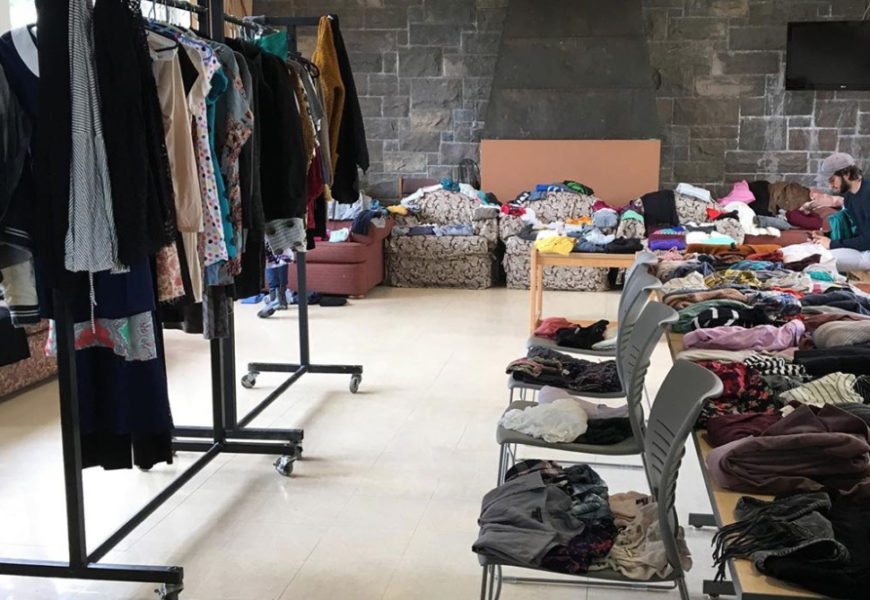Clothing swap in Larrabee common room on April 28, 2019. Photo courtesy of @thriftycamel Instagram.
Check your Instagram follow requests. Check your recommended lists. Chances are that an online thrift store will be there.
Connecticut College places a strong emphasis on sustainability. In March 2018, the College won a Silver rating from the Association for the Advancement of Sustainability in Higher Education. The Goodwin-Niering Center, which provides selected students with a certificate in environmental sustainability, has played a large role in garnering this rating for the College through its work to eliminate plastic straws on campus. And Instagrams like @thriftycamel, @camelcloset_ @socothrift and, @conncamelthrift are doing their best to reduce clothing waste at Conn.
“I started this page in August of 2018 because I had done a lot of thinking about sustainable shopping,” said @thiftycamel. @thiftycamel, which currently has 125 posts and 332 followers, is run by Rose Montera ‘19. “I thought maybe I could sell some clothing and supply Conn with a funky little on-campus shop and resource.” All the clothes on her page are below twenty dollars and on average below ten. Clothes vary in sizes, and she updates her page often with new items. Twenty percent of the proceeds go to Planned Parenthood, a choice made by her followers. When starting her account, she asked her followers where the money made should go and the vote was almost unanimous. Things that aren’t sold go straight to Goodwill.
@camelcloset, which is run by Amy Zhou ‘20 and Serenity Chen ‘19, is a slightly newer insta-thrift account. Started during spring break, the two girls aim to clean out their closets of things they may not wear come graduation day while helping to reduce clothing waste. While prices range item to item, they typically range between five and twenty dollars.
Instagram account @socothrift, which features predominantly male clothing, buys items from predominantly big thrift stores and sells them as a way to make some extra cash. “It’s fun and it’s ethical and we wanted to sell some stuff because we’re all pretty broke,” said one of the people running the account.
While you may wonder why students even bother at all with online thrift stores, clothing waste is a reality of the pain we put our planet through. The average American throws out about 82 pounds of textile waste per year. That’s 11 million tons of waste produced every year by just the United States alone. While it may seem harmless to throw away out of style items, these fabrics are likely to end up in landfills, where they pile up to produce toxic greenhouse gasses that are emitted into the atmosphere. Clothes can take up to 40 years to decompose; the dyes and chemicals in their fabrics can affect the quality of soil and water. Every garment purchased second-hand means one less new one is produced, which is important because the production of clothing is costly to the environment. To produce synthetic fibers like polyester requires lots of energy, as well as crude oil like petroleum; byproducts of this production include toxic gases and chemicals. Pesticides used on most plants mean that even cotton and linen garments have a negative impact. Transportation-related pollution also decreases when clothing is re-used, as new clothes are much more likely to travel long distances before being sold than are their second-hand counterparts.
So next time you want to revamp your wardrobe, maybe hit up these accounts before stopping at Forever 21 or American Eagle. @Thriftycamel is also organizing a clothing swap that will happen later in the spring. “I think it would be a great way to reuse/recycle clothing but also help people clear out their closets!,” @Thrifycamel says. Keep an eye out for posters and on the Instagram for dates of the swap.
(@conncamelthrift refused a request for comment)









